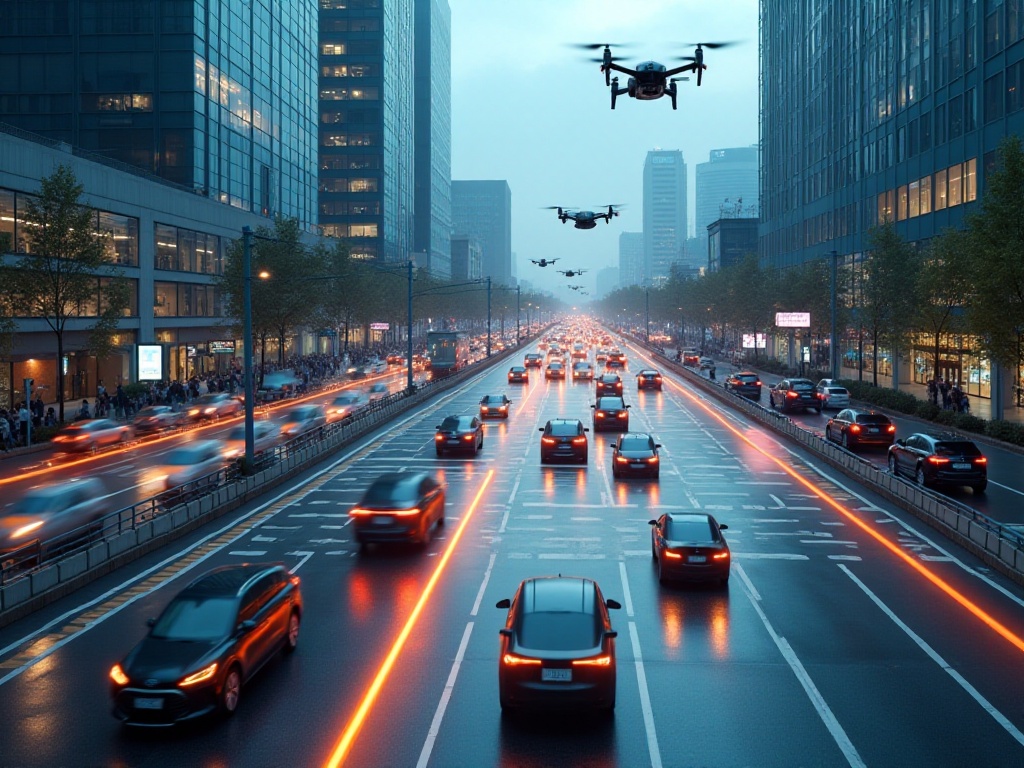Introduction
Recently, I've noticed an intriguing phenomenon - discussions about enterprise digital transformation are exploding across my social circles and major social platforms. As a long-time AI industry practitioner, I deeply feel the momentum of this wave. Without exaggeration, 2025 will absolutely be the golden period for enterprise AI transformation. Let me analyze the reasons from a professional perspective.
Market Insights
Honestly, I was shocked when I saw the latest market data - the global AI market size is expected to exceed $150 billion in 2025! This number is absolutely crazy! Just a few years ago, this figure was less than half of what it is now. What does this mean? Simply put, AI technology has evolved from a laboratory "toy" into a real "productivity tool" that creates value.
Now we can see AI's influence in every aspect of our lives. For example, why do you always see content you're interested in while scrolling through TikTok? Why do you see related ads when opening other apps after searching for a product on Taobao? These are all examples of AI working quietly in the background. Even more amazingly, AI can now help you write copy, create designs, and program - we've truly entered a new era of "AI at our service."

Current State of Technology
When it comes to AI technology development, I must discuss three extremely important areas in detail.
First, let's look at machine learning. Remember the awkward machine translation tone when using Google Translate a few years ago? Now, AI translation has evolved to a new level. In a recent international project, I found that AI translation of professional documents could rival professional translators, and it's much faster. Not just translation, AI is incredibly powerful in image recognition too. I recently visited a smart factory where the AI quality inspection system achieved 99.9% accuracy in detecting product defects - something unimaginable before.
Next, let's talk about computer vision technology. Today's AI doesn't just understand static images; it has evolved to comprehend dynamic videos. For example, many shopping malls' "smart loss prevention systems" can monitor shoppers' abnormal behavior in real-time; subway station passenger flow warning systems can accurately predict congestion; even the special effects we use daily on TikTok are supported by powerful computer vision technology.
Finally, we must discuss Natural Language Processing (NLP). Current AI can accurately understand human language and generate impressive content. I recently tried several AI writing assistants that could not only write topic-relevant articles but also adjust tone and style for different scenarios. More impressively, today's AI customer service can handle over 80% of daily inquiries with consistent service quality.

Application Scenarios

Business Section
In the business sector, AI applications are countless. Let me share some particularly cool cases:
Uber's real-time dispatch system is an amazing example. Its AI system can process millions of data points in an instant to match each passenger with the most suitable driver. The system considers not just distance but also traffic conditions, driver ratings, historical orders, and other multi-dimensional data. This system reportedly helped Uber reduce average waiting times by 40% and empty vehicle rates by 30%.
Amazon's personalization recommendation system is even more impressive. It doesn't simply recommend based on your purchase history but builds a complex user profile system. For instance, it analyzes your browsing time, click sequence, shopping cart actions, and other details, even predicting your purchase tendencies at different times. This system directly contributes to over 35% of Amazon's sales - an incredible number!
Then there's Alibaba's intelligent pricing system, which can adjust product prices in real-time based on market supply and demand, competitor pricing, user profiles, and other factors. Data shows that merchants using this system increased their profit margins by an average of 15%.
Lifestyle Section
Honestly, our lives are now completely surrounded by AI, though many people might not realize it. From personalized news pushes on our phones when we wake up, to smart dispatch while hailing a ride, to intelligent recommendations while watching shows at night - AI is everywhere.
AI applications in healthcare are particularly exciting. I recently learned about a super cool case: a hospital introduced an AI-assisted diagnostic system that can analyze CT images in seconds and accurately mark suspicious lesions. Even more impressive, it can provide treatment suggestions based on massive case data. Statistics show this system improved doctors' diagnostic efficiency by 300% and accuracy by 20%.
In education, AI is playing an increasingly important role. Now there are intelligent question bank systems that can automatically generate personalized practice questions based on students' performance. My nephew uses such a system for learning, and he says it's much more interesting than traditional practice methods, with particularly good learning outcomes.
Implementation Guide

Strategic Thinking
After discussing so many cool applications, I'm sure everyone is eager to try them. However, implementing AI in enterprises isn't simple. I've summarized some key points from my experience consulting for multiple companies.
First, enterprises must be well-prepared. This includes: clarifying business objectives (what problems to solve with AI), evaluating data resources (what data is available and its quality), establishing ethical frameworks (how to ensure AI applications are ethically sound), etc. I especially recommend that enterprises start with a small, well-defined pilot project, such as a customer service chatbot or simple data analysis.
Data preparation is also crucial. Many enterprises face data silo issues, with data scattered across different systems, inconsistent formats, and varying quality. Before launching AI projects, it's essential to organize the data architecture and establish unified data standards.
Additionally, enterprises need to consider the cost-benefit aspects of AI applications. While many open-source AI tools and platforms are available, implementing AI in production environments still requires significant resources. I suggest enterprises conduct a detailed ROI analysis to evaluate the investment-return ratio.

Implementation Points
During implementation, building a reliable team is crucial. This team needs versatile talents who understand both technology and business. My suggestion is: the technical team should include AI algorithm experts, big data engineers, frontend developers, etc., while the business team should have domain experts, product managers, and operations personnel.
Tool and platform selection is also important. There are many AI development platforms available now, such as TensorFlow, PyTorch, PaddlePaddle, etc., each with its own characteristics. I recommend enterprises choose based on their needs and team's technical stack. For those just starting AI transformation, consider using low-code platforms to quickly validate ideas.
In project management, I particularly recommend using agile development methods. AI projects often involve many uncertainties and require constant trial and error and adjustment. Through short sprints, ideas can be quickly validated and problems promptly identified. An AI project I previously participated in completed the journey from concept validation to formal launch in three months through two-week iterations.
Data security and privacy protection must also be considered. Countries are increasingly strict about data protection requirements, and enterprises must ensure compliance when using AI. It's recommended to establish comprehensive data security systems and conduct regular security audits.

Conclusion
At this point, I wonder if everyone has gained a deeper understanding of enterprise AI transformation? Actually, AI transformation isn't just a simple technology upgrade project, but a continuous business innovation process. It requires collective effort and patience from the entire enterprise.
If your enterprise is considering AI transformation, my advice is: first conduct thorough research and planning, identify pain points, choose suitable entry points, then progress gradually. Remember, successful AI transformation isn't achieved overnight but requires constant trial and error and optimization.
Finally, I want to say that 2025 is truly an excellent opportunity. AI technology is now quite mature, various tools and platforms are abundant, and costs continue to decrease. Missing this opportunity might put you at a disadvantage in future competition.
What do you think is the biggest challenge in enterprise AI transformation? Welcome to share your thoughts and experiences in the comments!









